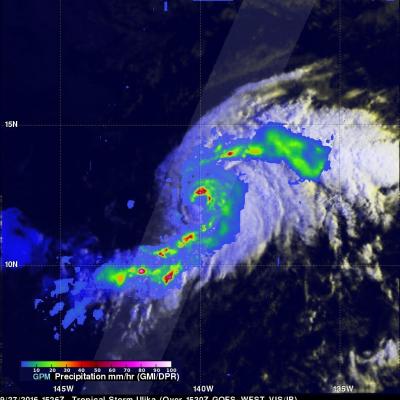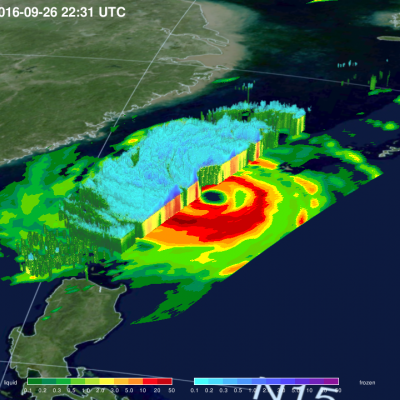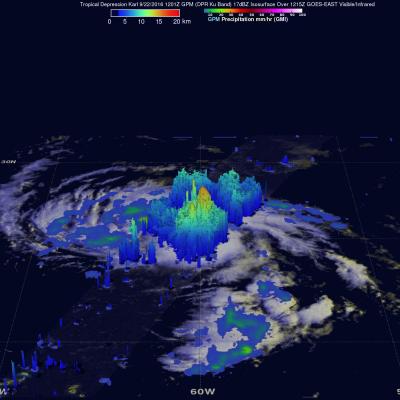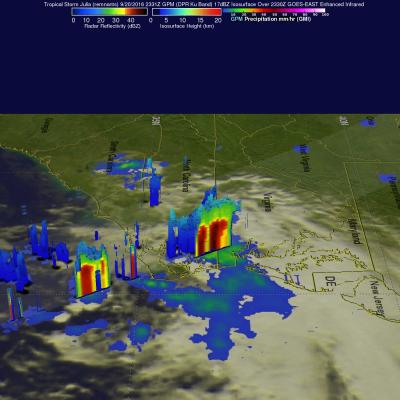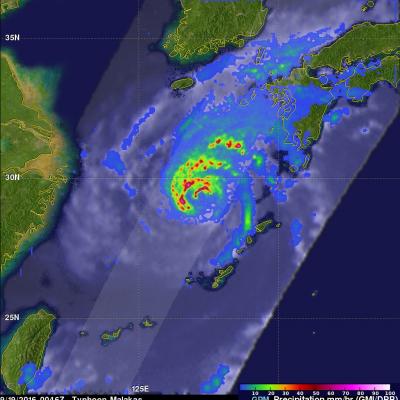GPM Finds Heavy Rain In Tropical Storm Ulika
The GPM core observatory satellite had a good early morning look at newly formed tropical storm Ulika on September 27, 2016 at 5:26 AM HST (1526 UTC). Ulika was located in the central Pacific Ocean less than 975 nautical miles east-southeast of Hilo, Hawaii. GPM found that Ulika contained some very powerful convective storms and a well defined center of circulation. GPM's Dual-Frequency Precipitation Radar (DPR) discovered that some strong convective storms inside the tropical storm were dropping precipitation at a rate of over 187 mm (7.4 inches) per hour. A GPM radar slice through the center


